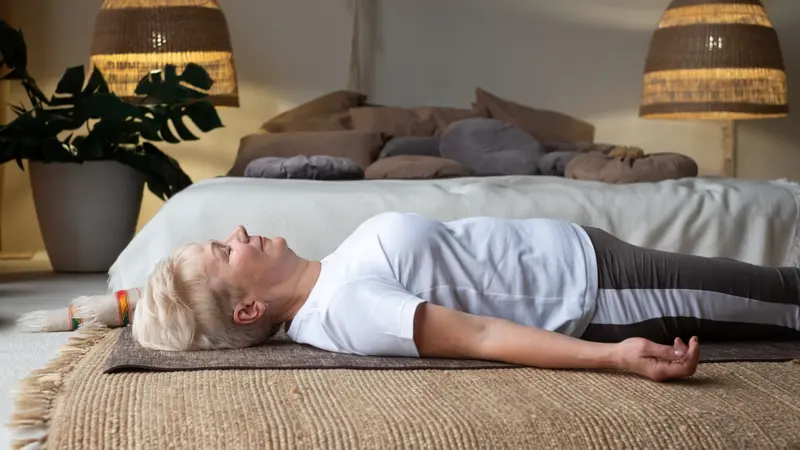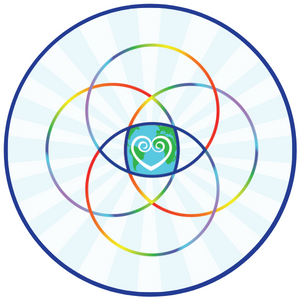
Healing Ways
Healing Ways
Yoga Nidra: Promising for Better Sleep and Insomnia Relief
With sleep disorders like insomnia affecting millions, non-pharmaceutical interventions are gaining traction as effective, low-risk alternatives. Among these, yoga nidra—a guided meditation practice often described as yogic sleep—is emerging as a powerful tool for improving sleep quality and reducing anxiety.
Yoga Nidra
Yoga nidra, rooted in ancient Indian traditions and popularized in the 20th century, is a systematic method of inducing deep relaxation while maintaining conscious awareness. Unlike traditional meditation, yoga nidra is practiced lying down, usually in savasana (corpse pose), where a trained guide leads participants through stages including body scanning, breath awareness, visualization, and intention-setting (sankalpa). This process helps the practitioner enter a hypnagogic state, which is a unique threshold between wakefulness and sleep wherein the body rests while the mind remains alert.
Physiological Effects That Support Sleep
Scientific interest in yoga nidra has increased as researchers investigate its impact on the nervous system. Studies suggest that yoga nidra activates the parasympathetic nervous system—the part of the nervous system responsible for rest, digestion, and recovery—while dampening the fight-or-flight sympathetic nervous system. This physiological shift can lower heart rate, reduce respiratory rate, and ease muscle tension, creating the conditions for restful sleep.
Furthermore, yoga nidra has been linked to increased melatonin secretion, the hormone regulating circadian rhythms, potentially improving sleep onset and duration. Beyond sleep, regular practice has shown benefits in reducing anxiety, improving mood, and easing physical discomforts.
Research on Yoga Nidra and Insomnia
A 2023 pilot study published in the Journal of Psychosomatic Research explored yoga nidra’s potential as a treatment for insomnia, a condition marked by difficulty falling or staying asleep. The study involved 22 adults suffering from insomnia who attended two sessions at a sleep research center. In the first session, participants lay quietly for 90 minutes as a baseline measurement. During the second, they practiced yoga nidra through guided vocal instructions aimed at inducing deep relaxation and mental calm.
Researchers measured physiological markers including brain wave activity using an electroencephalogram, heart rate variability, respiratory rate, and participants’ self-reported mood and anxiety. Results were encouraging: yoga nidra was well tolerated, with a low dropout rate of 5%, and participants showed a significant decrease in respiratory rate after the practice, indicating relaxation. While the study was preliminary and not designed to establish clinical efficacy definitively, it suggested that yoga nidra influences key relaxation mechanisms associated with sleep.
The authors highlighted yoga nidra’s accessibility and low cost, suggesting it could become an effective complement or alternative to traditional sleep aids, which often carry side effects or limited availability. However, they emphasized the need for larger, controlled trials to confirm long-term benefits and understand how yoga nidra might be integrated into standard insomnia treatment.
How to Practice Yoga Nidra for Sleep
Yoga nidra is accessible for all ages and fitness levels, requiring no special equipment beyond a comfortable surface to lie on. Beginners are encouraged to start with guided sessions ranging from 15 to 40 minutes, available through apps, online videos, or yoga studios.
A typical session begins with settling into a comfortable lying position, followed by setting a personal intention or sankalpa. The guide then leads practitioners through a body scan to heighten awareness of bodily sensations, breath observation to promote calmness, visualization exercises to evoke peaceful imagery, and finally a gentle return to waking consciousness.
Practicing yoga nidra before bedtime can facilitate the transition into sleep by quieting the mind and relaxing the body, making it easier to fall asleep and stay asleep.
Emerging Tool for Sleep Therapy
Yoga nidra presents a promising, gentle method for improving sleep quality and managing insomnia. Supported by ancient wisdom and emerging scientific evidence, it offers a natural pathway to relaxation and restorative rest without side effects associated with many sleep medications. While more extensive research is needed to validate its effectiveness fully, initial findings and user testimonials highlight yoga nidra as a valuable tool in the growing field of mind-body sleep therapies.
REFERENCES
https://pmc.ncbi.nlm.nih.gov/articles/PMC9973252/
https://health.clevelandclinic.org/what-is-yoga-nidra
https://www.sleepfoundation.org/meditation-for-sleep/yoga-nidra#references-167294
https://pubmed.ncbi.nlm.nih.gov/34265219/
https://pubmed.ncbi.nlm.nih.gov/34093343/


 By
By







